Windows syncs with One Drive by default and you can access the One Drive files right from the File Explorer. There are even a few other apps like Creative Cloud that will sync with the File Explorer right after installing Adobe Creative Cloud apps. However, if you are a heavy Google Drive user like myself and want to view all your Drive files right from the File Explorer, setting it up is as easy as installing an application from Google. Let’s add Google Drive to Windows File Explorer.
Add Google Drive To Windows File Explorer
Unlike the Google Drive app which only worked online, Backup & Sync will create a Google Drive folder right inside the file explorer and let you access the files offline. You can delete or drop files into that folder and the changes take effect in Drive instantaneously. Begin by downloading Backup and Sync from Google on your computer. Run the app and click on ‘Get started’.

The next step is to connect your Google account to the app. Sign in with your Google Account proceed to the next step.

On this page, the app will create a copy of the files on your computer in Google Drive. This will allow you to access all the locally stored files from around the world. Select the folders that you want to backup to Drive automatically. In my case, I chose Desktop, Documents, and Pictures.
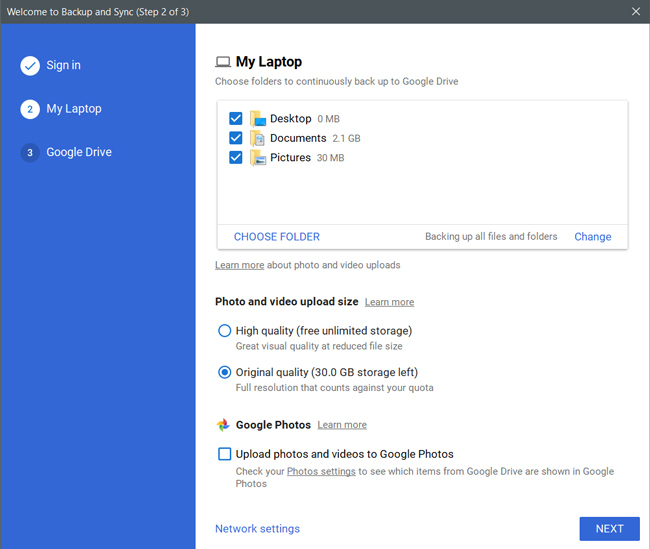
If you wish to backup your photos to Google Photos, toggle this checkbox marked in red below and click “Next”.
 Now, it’s time to create a folder that will store a copy of your Drive files. Check the box next to “Sync My Drive to this computer” and set the location of that folder. The app will sync all the cloud files to this folder. Click the Start button to finalize the setup.
Now, it’s time to create a folder that will store a copy of your Drive files. Check the box next to “Sync My Drive to this computer” and set the location of that folder. The app will sync all the cloud files to this folder. Click the Start button to finalize the setup.
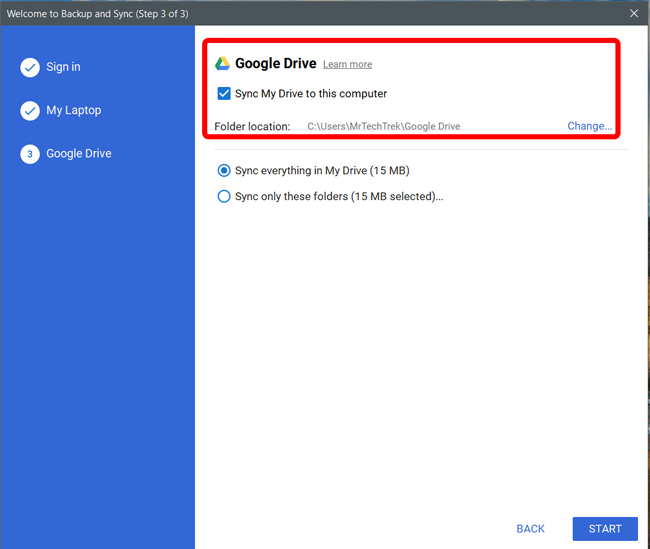
You can either choose to sync everything or a few selected folders to the local folder on your computer. The files and folder that you choose on this page will show up locally and you can even access them when you’re offline. Yes, you’d be able to change the folder afterward as well.
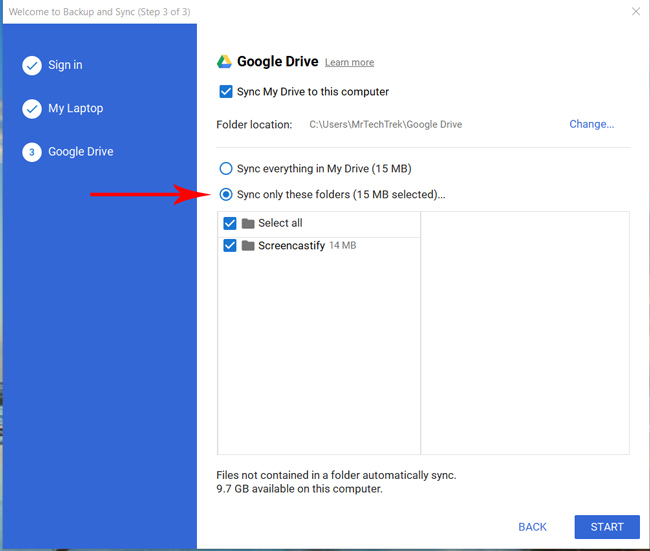
Click on Start and click on Continue on the Pop-up.
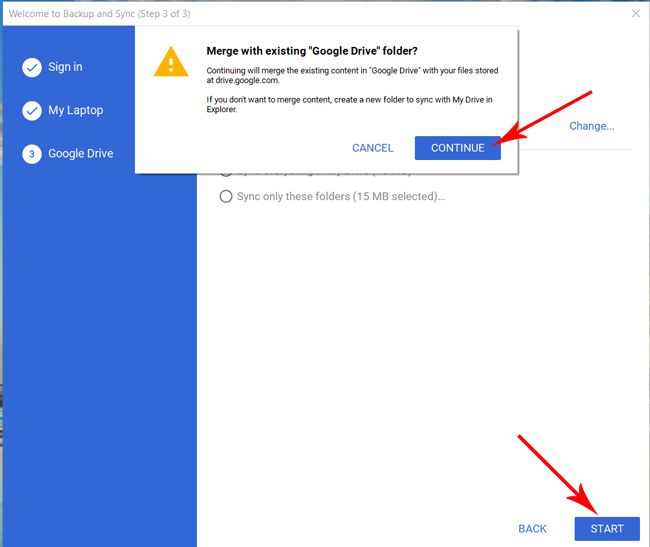
Now, you can see the Google Drive folder in the location that you set during configuration. It may take time to get all your drive files depending on your data and the internet connection.
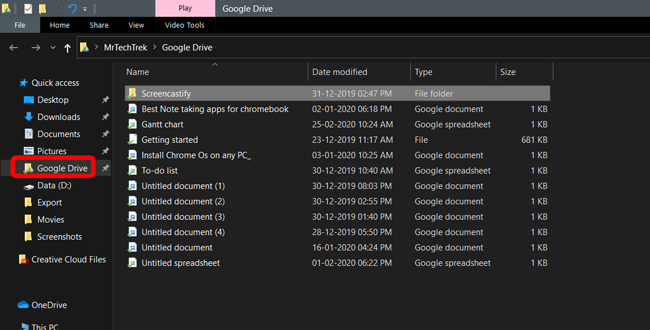
The folders that you chose to back up to Drive will give you the visual representation with a green tick mark.

You can also check the backup status from the taskbar as well. This will give you a log of all the files that have been backed up or downloaded.

If you delete a file from the Google Drive folder in the File Explorer, it won’t be deleted from the Drive. This feature is disabled by default so that you don’t accidentally delete all the files from your Drive. However, if you want to enable this feature, click the Backup and Sync icon from the System Tray > Click the three-dot menu > Preferences> My Laptop> Always remove both copies.
Fair warning, you will lose all your data if you accidentally delete the local folder.
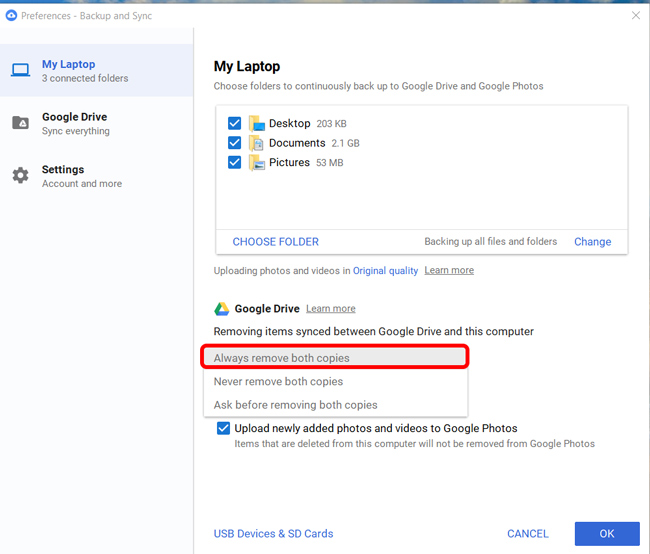
If you want to back up files that are just shared with you and not actually on your Google Drive, simply open Google Drive in a web browser> Shared with me> Right-click on the Shared file or folder and click on Add to My Drive.

It will start syncing to your computer and you would be able to access that file from the File Explorer.
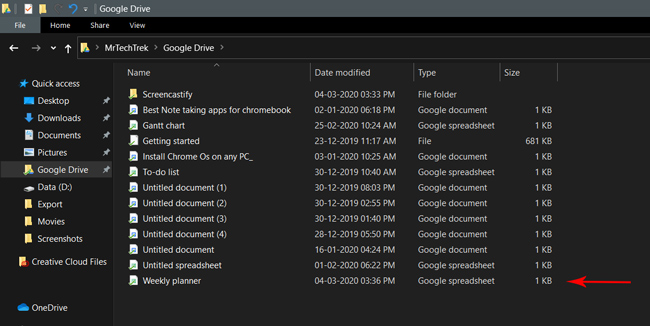
For Gsuite Users
If you have a Gsuite account, Drive File Stream app would make more sense for you. Gsuite account is nothing but a work or school account. For example, adam@techwiser.com is probably a G Suite account, whereas adam@gmail.com is a regular account.
Start by downloading and installing Drive File Stream app on your computer and follow the on-screen instructions.

Just like we did before, Log in with your Google account and proceed to the next step.

Unlike Backup and Sync, there are no more settings to change and instead of creating a Folder, it creates a separate Drive that gives you a dedicated space to access the files.

Unlike Backup and Sync, you cannot back up local files to Drive by simply dragging and dropping the files to the shared drive.
Wrapping up
After all these extra features, ‘Backup and Sync’ and ‘Drive File Stream’ apps are obviously better than the Google Drive app which we can use in the browser anyways. And they also help to copy and paste files between folders in Drive which is not that easy task on the website.
And you cannot use both the apps at the same time for the same account. Regular users cannot use the Drive File Stream app and for G Suite users, it’s better to go with Drive File Stream as you can also view the files shared to you right from the File Explorer.
Best Google Drive Add-ons to manage efficiently